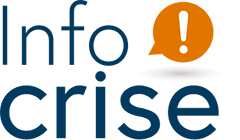Monitoring in Luxembourg
In the Grand Duchy of Luxembourg, ambient (environmental) radioactivity - both natural and artificial - has been continually measured since 1983 by the Radiation Physics Laboratory of the Department for Radiation Protection at the National Health Directorate using a network of measurements and automatic alerts.
A large number of samples are taken each year in different biological environments and in the food chain. These tests enable changes in residual artificial radioactivity to be monitored, as was the case after the accident in Chernobyl in 1986, and also the exposure of the Luxembourg population to be analysed.
The national network for measurements and automatic alerts provides over 19,000 measurements of ambient radioactivity per month, which are then the subject of monthly public reports.
Aims
The aim of this network of measurement and automatic alert is to:
- continually monitor ambient radioactivity and natural background radiation;
- detect uncontrolled and accidental releases from nuclear installations in neighbouring countries;
- alert the national authorities in the event of a nuclear emergency;
- enable an overview of the radiological situation to be rapidly established.
This network is entirely automated and alerts the authorities when radiation that exceeds the levels natural background radiation is detected.
Monitoring programmes
Two monitoring programmes were established to monitor the Luxembourg population and the environment for radiation:
- monitoring radioactivity in the environment;
- monitoring radioactivity in the food chain.
These two programmes go hand-in-hand as any increase in radioactivity in the different biological environments causes an unavoidable increase in radioactivity in foodstuffs.
In terms of naturally occurring radioactivity in the environment, radon is of particular importance. This gas comes from rocks and can be found in high concentrations in both private and public buildings.
The Department for Radiation Protection's laboratory also measures radon levels in homes, schools, crèches and some workplaces.
Last update

